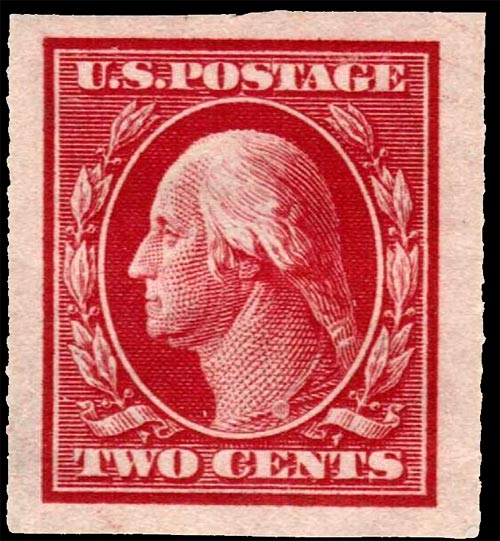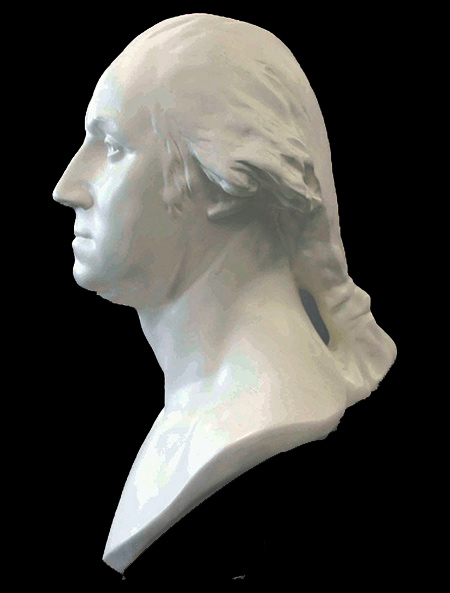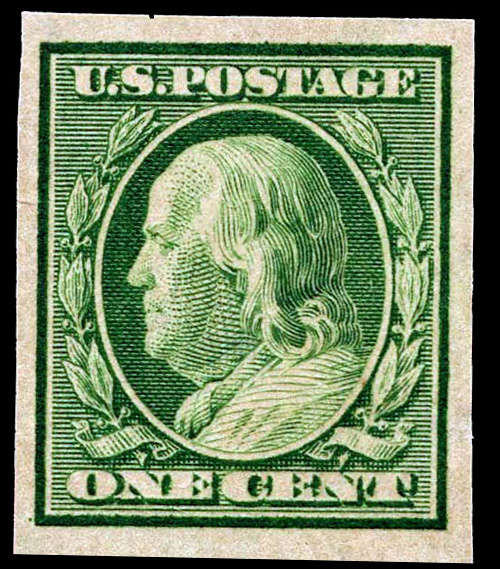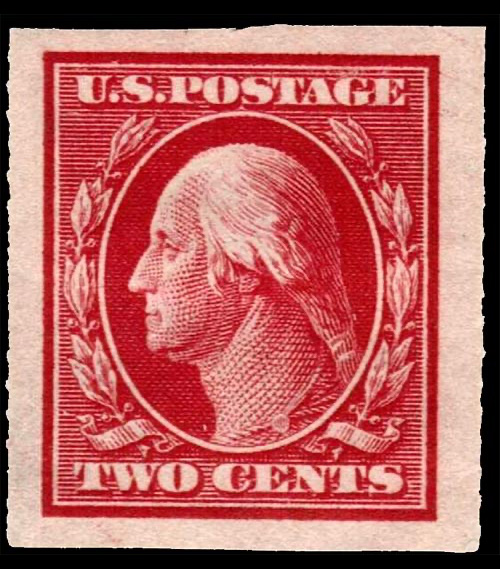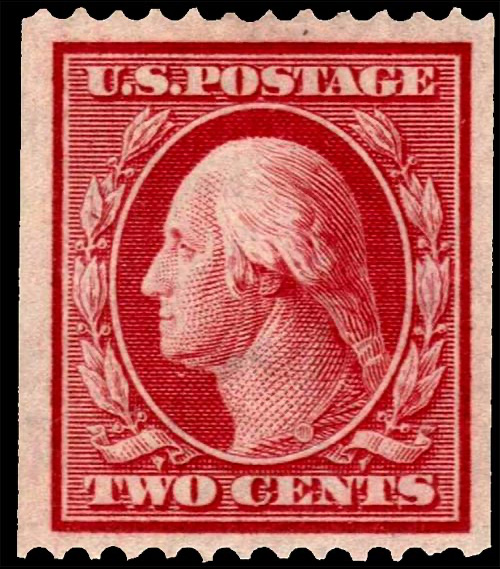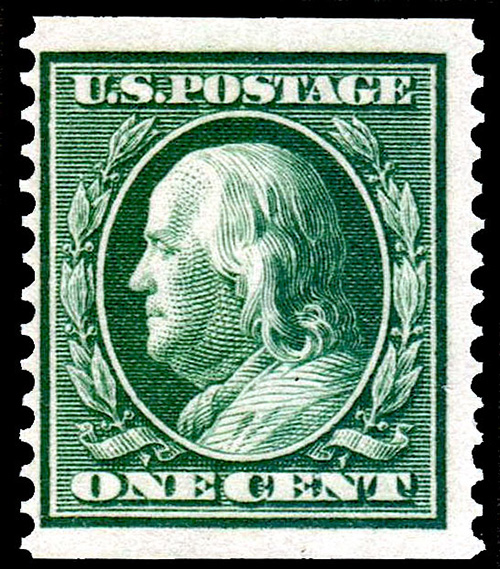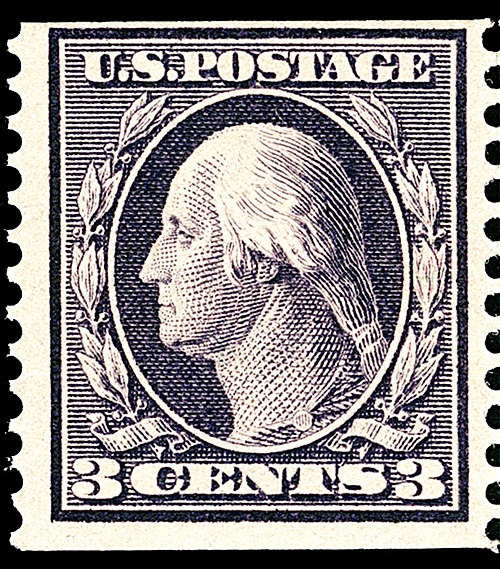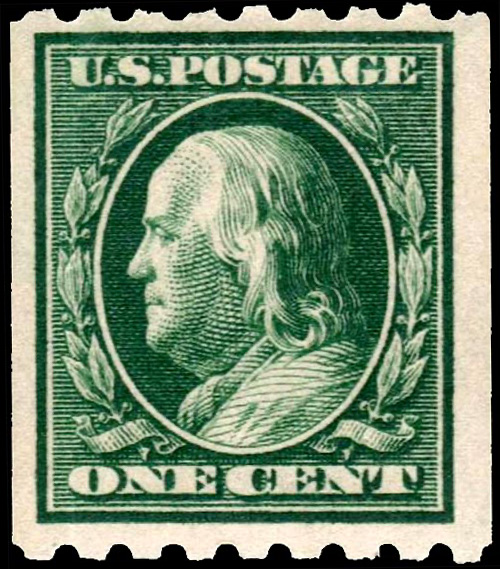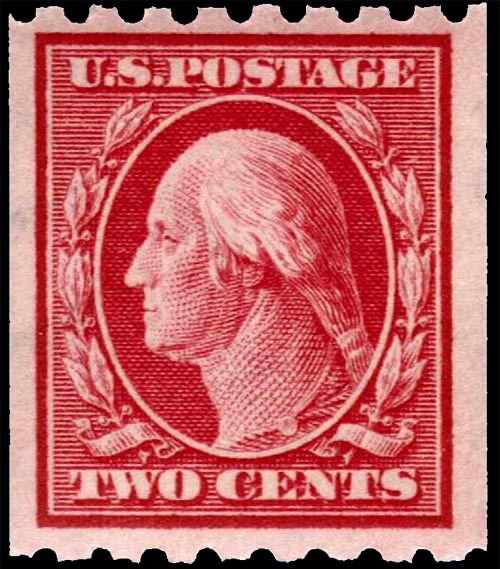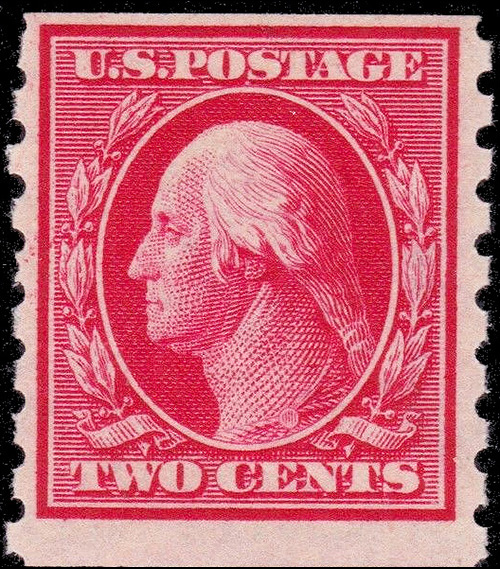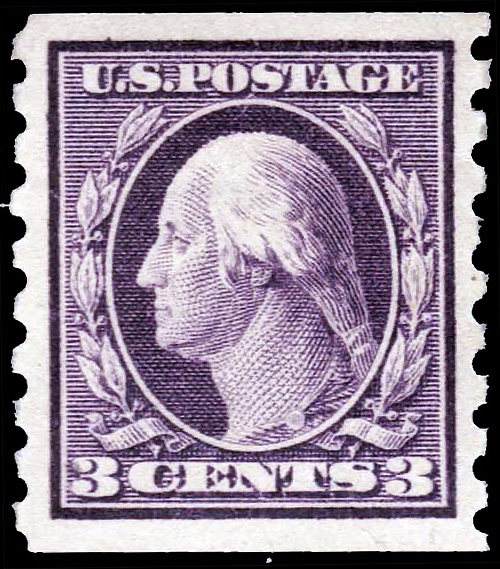Basic Info
2¢ Carmine, light carmine or dark carmine
Subject: George Washington
Printing Method: Flat Plate
Perforations: Imperforate
Watermark: single line USPS watermark
Scott #: 384
Quantity Issued: n/k
Issued: October, 1910
Value
SINGLES
Used
$1.50 - $3.50
No postmark with (MH)
$1 - $2
Full perfect gum, no postmark
no trace of stamp hinge mark (MNH)
$1.25 - $2.50
PAIRS
Used
$10 - $20
No postmark with (MH)
$5- $8
Full perfect gum, no postmark
no trace of stamp hinge mark (MNH)
$8 - $12
Multiply by 2 for line pairs
Notable Sales

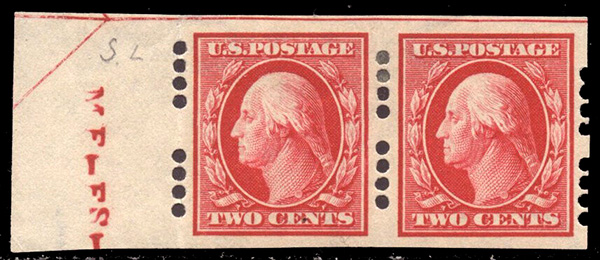
The more desirable stamps of this issue are those that have been privately perforated. See below for more details. This pair have Farwell private perforations.
Sold January 2023 for $61 (MH)
Explore South West Stamp's Auctions
#386 Plate Numbers

Imprint, star and plate number
5092
5280-84, 97-99
5300-03, 07, 12, 14, 18, 29, 32, 37, 42, 48, 53, 58, 70, 75
5516-18, 28, 42, 51, 53, 85, 89-90
5608-09, 18-19, 24, 27, 36, 42, 45, 48, 54, 55
Imprint, 'A" and plate number
5557-65
5660-90, 94
5717-17, 97
Paste up pairs

The makers of private coils pasted fifteen of these sheets together, end to end or side to side. These were then perforated, cut into strips and rolled into coils of 3,000. A paste up, occurred every twenty stamps, each strip being divided by the guide line running in the same direction as the perforations. The primary reason for issuing imperforate stamps in sheets being for the use of makers of private perforations, Above is shown an example of where two stamps have been pasted together.
Center Line Blocks
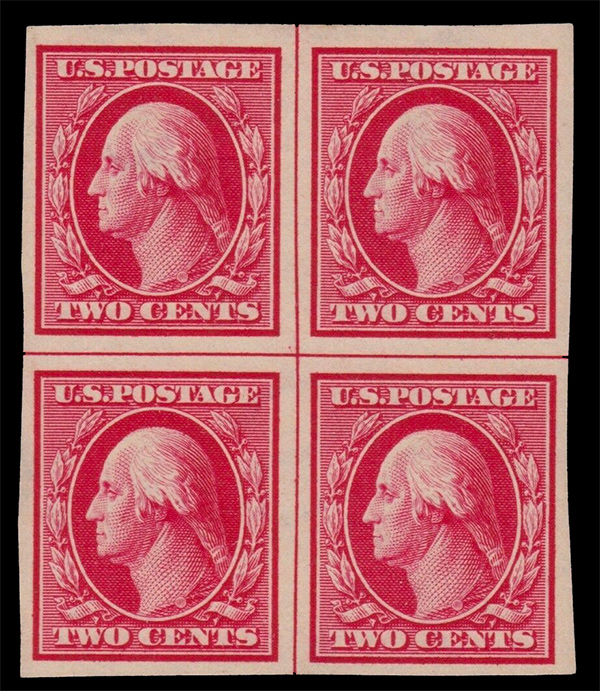
Ideally imperf stamps should be collected in pairs, for the simple reason that one can see that the stamp(s) are genuinely imperforate and not stamps with their perforations cut off. The cost of #383 is so low that the cost of the center line block makes it more obtainable. The center line block is so called because it is where the two lines that separated panes, cross.
A New Watermark
The purpose of this change was to strengthen the paper and to give it a more uniform thickness. The old double line watermark covered too much space and made the lettered area quite a bit thinner than the rest of the paper, which caused variation in the shrinkage of the paper. The new watermark was also smaller, occurring 400 letters to a full sheet instead of 360.
Single Line USPS Watermark
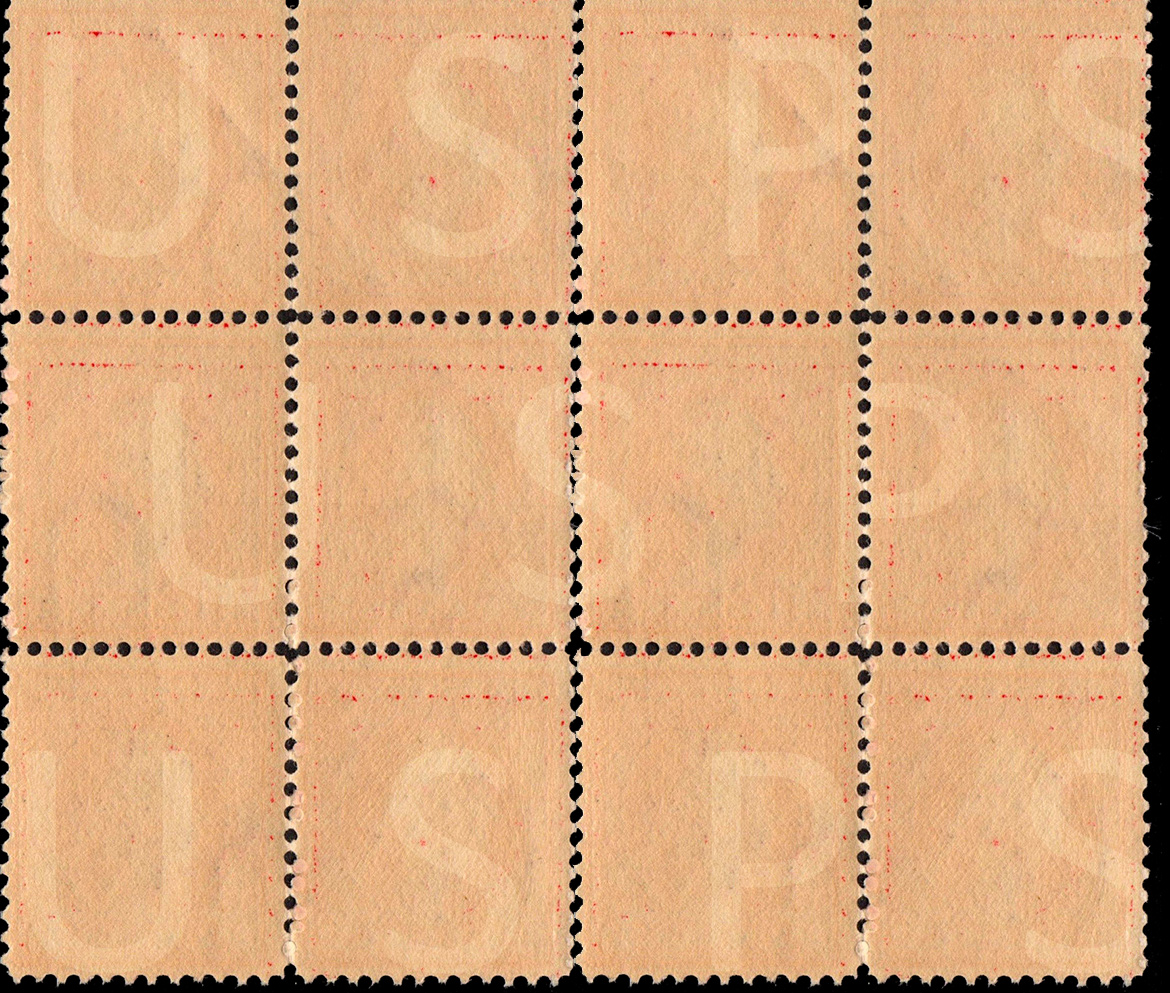
The purpose of imperf
These imperf. stamps were issued primarily for use in making private coils for vending machines. They were printed from the same type of plates as were used for the perforated stamps of this issue, although not all the plates noted for perforated varieties were used.
The imperf. stamps (unless in coils) were issued in full sheets containing 400 subjects, divided into four panes of 100 each by horizontal and vertical guide lines. These guide lines terminated in arrows at the margins. In the perforated varieties the guide-Iines appear as straight edges at top or bottom and right or left. On the imperforate sheets they permit additional position varieties. The main purpose of this issue being for the manufacture of private coils, below are listed the private perforations used on this stamp.
Earliest documented use
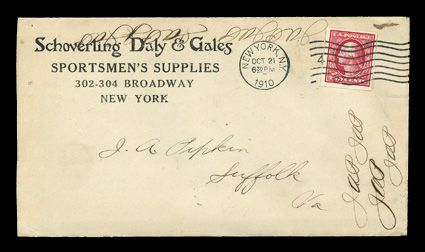
Earliest documented date of use (#384V), October 21st, 1910, The earliest documented usage of any single line watermarked stamp
